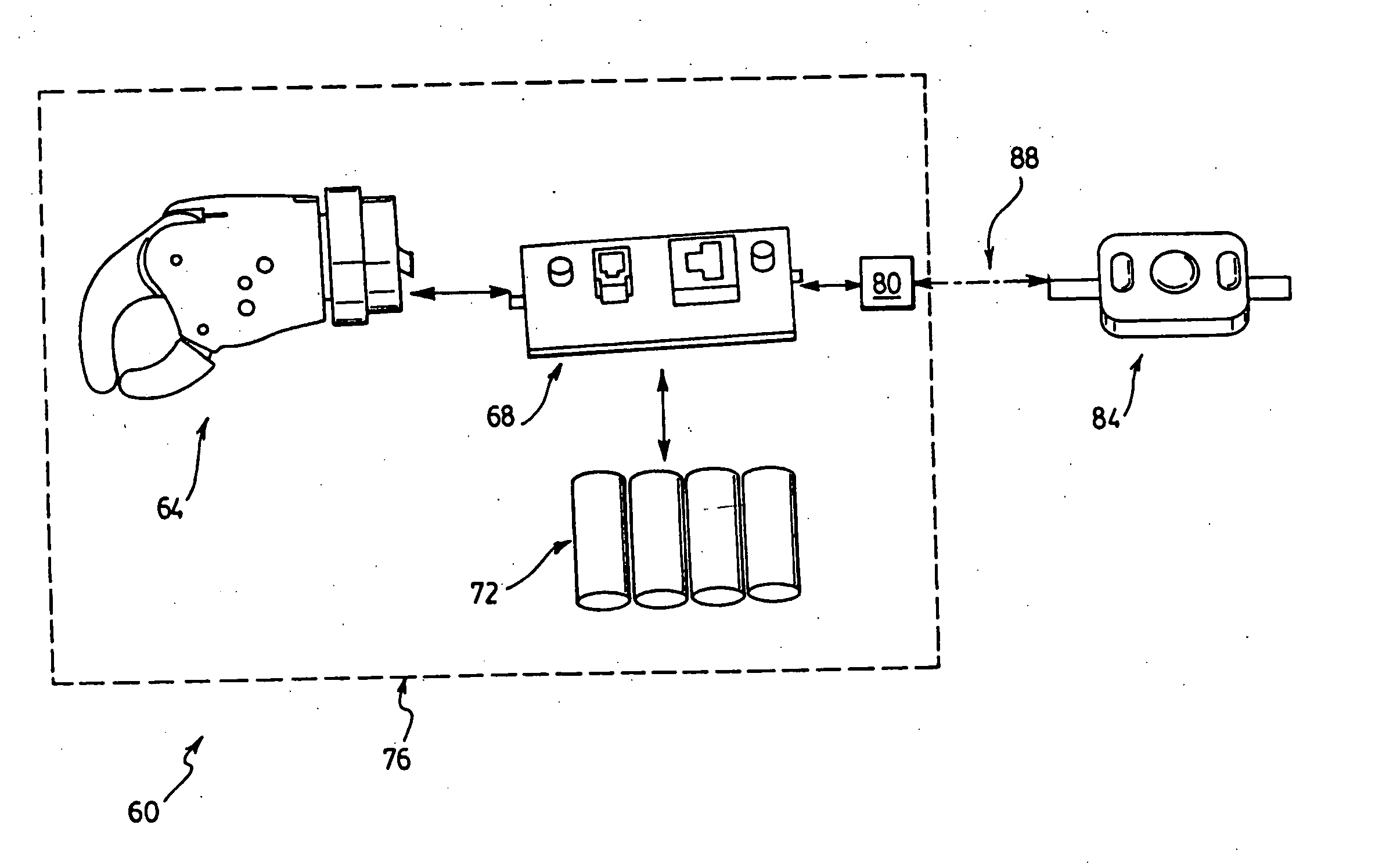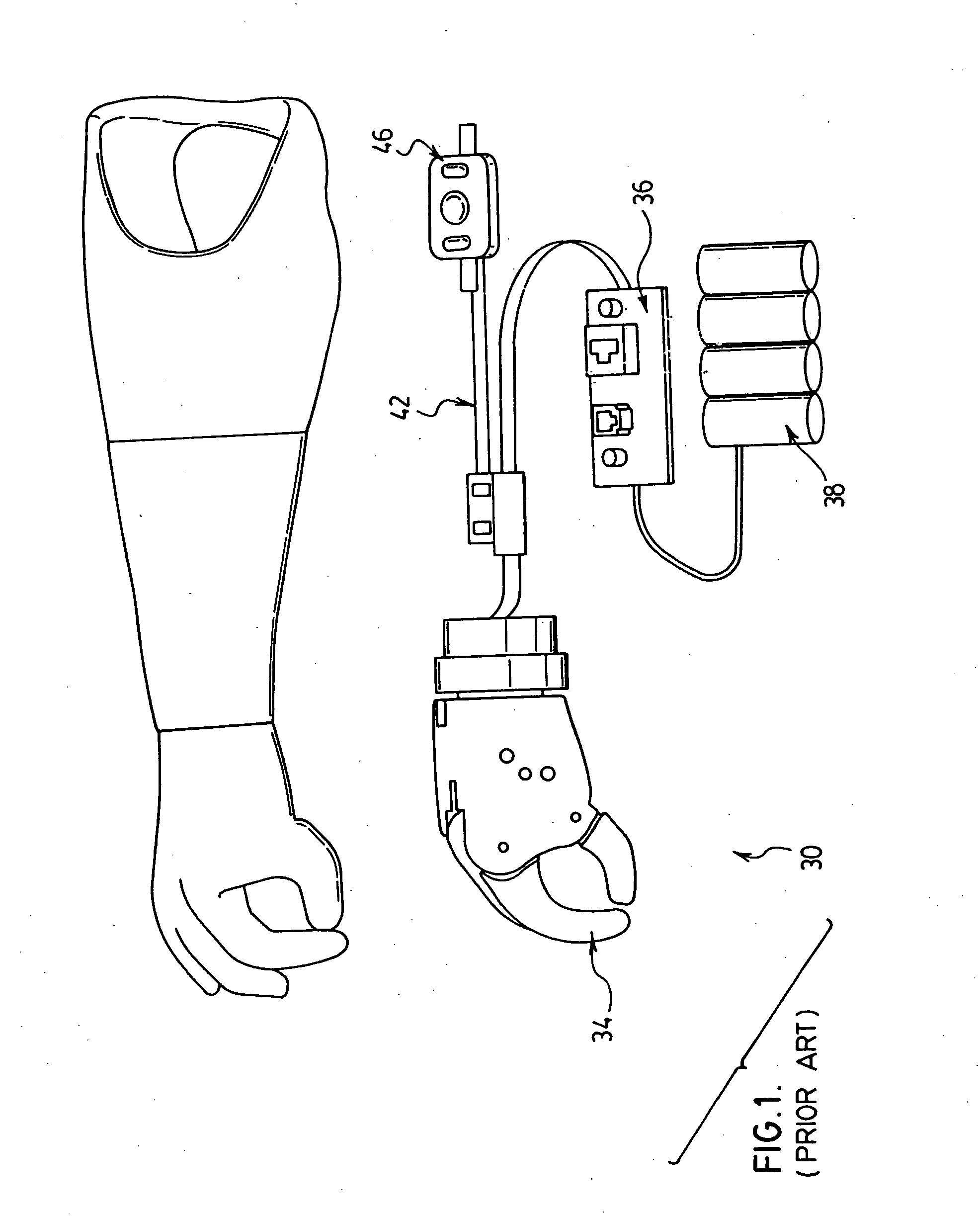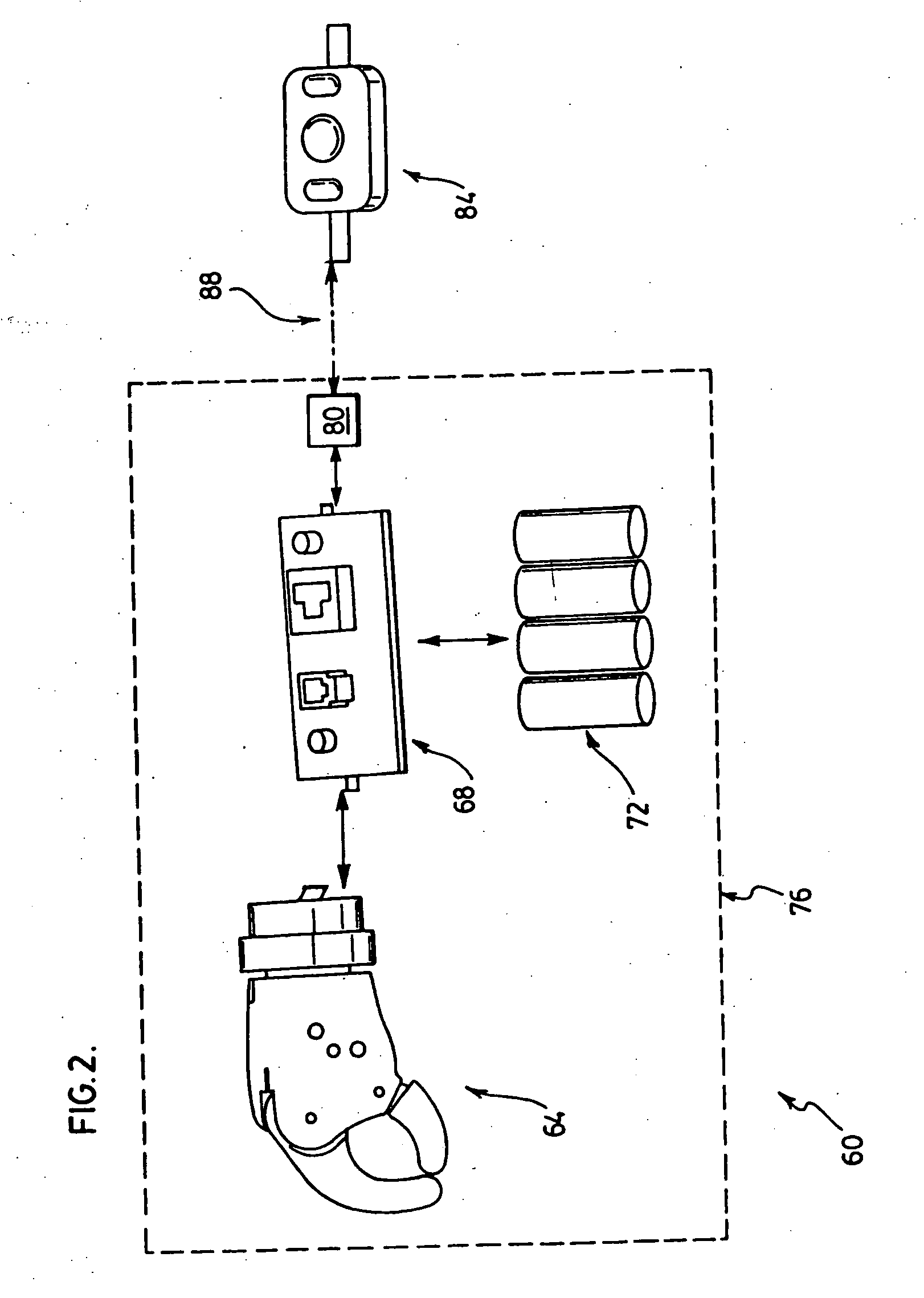Electromyographic sensor
a technology of electromyographic sensor and sensor body, which is applied in the field of electromyographic sensor, can solve the problems of inability to achieve the technology of creating systems at the size needed and at a low cost, and achieve the effect of improving ergonomics and optimizing exercise and training
- Summary
- Abstract
- Description
- Claims
- Application Information
AI Technical Summary
Benefits of technology
Problems solved by technology
Method used
Image
Examples
Embodiment Construction
[0033] Referring now to FIG. 1, a prior art prosthetic system is indicated generally at 30. System 30 includes an electromechanical prosthetic limb 34 that is connected to a controller 36 having a separate power supply 38. Controller 36 is connected via a ribbon cable 42 to an electromyographic sensor 46. Sensor 46 is an Otto Bock brand of myographic electrode, model number 13E125. Sensor 46 can be affixed to any tissue on the wearer of limb 34 that can be activated by the wearer so that impulses can be sent to sensor 46 for the purposes of controlling limb 34. Ribbon cable 42 carries power to sensor 46 from power supply 38. Cable 42 also carries signals generated by sensor 46 to controller 36. In turn, controller 36 is operable to interpret such received signals and issue instructions to limb 34 to cause limb 34 to move in a particular fashion. Cable 42 presents certain problems for system 30, in that its length can limit the tissue that can be used by the wearer. As yet a further ...
PUM
 Login to View More
Login to View More Abstract
Description
Claims
Application Information
 Login to View More
Login to View More - R&D
- Intellectual Property
- Life Sciences
- Materials
- Tech Scout
- Unparalleled Data Quality
- Higher Quality Content
- 60% Fewer Hallucinations
Browse by: Latest US Patents, China's latest patents, Technical Efficacy Thesaurus, Application Domain, Technology Topic, Popular Technical Reports.
© 2025 PatSnap. All rights reserved.Legal|Privacy policy|Modern Slavery Act Transparency Statement|Sitemap|About US| Contact US: help@patsnap.com



